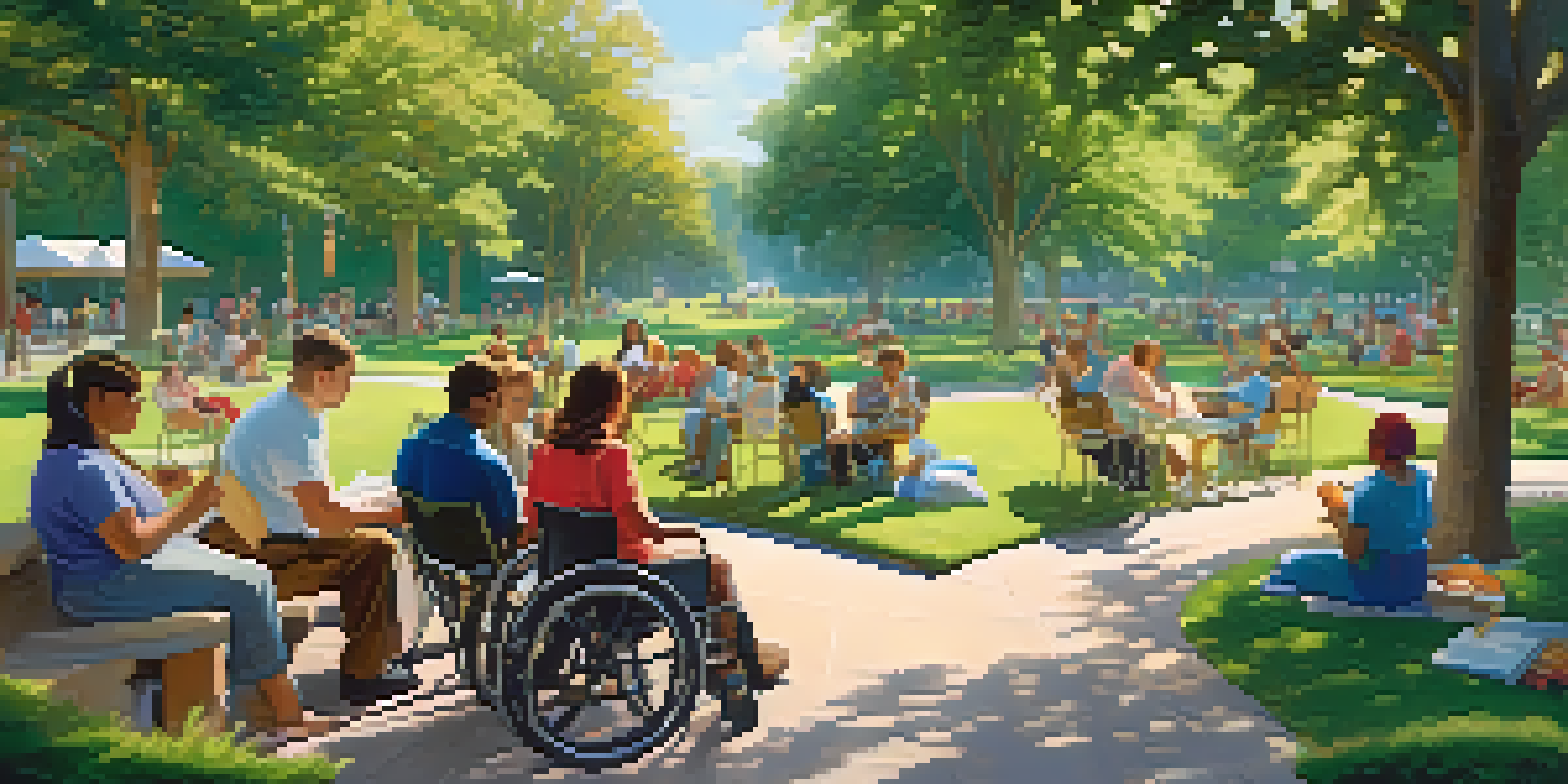Examining Disability Tropes in Hollywood Films and TV Shows

Understanding Disability Tropes in Media
Disability tropes are recurring themes or clichés that often appear in films and TV shows. They can shape audiences' perceptions and understanding of disability, for better or worse. By examining these tropes, we can uncover the underlying messages they convey about people with disabilities and their experiences in society.
The Tragic Disabled Person Trope
One of the most prevalent tropes is the 'tragic disabled person.' This narrative often portrays individuals with disabilities as inherently sad or pitiful, often eliciting sympathy rather than empathy. For example, characters like Charlie in 'The Elephant Man' evoke feelings of sorrow, overshadowing the complexity of their lives and identities.
Understanding Negative Disability Tropes
Common negative tropes like the 'tragic disabled person' and 'supercrip' set harmful expectations and portrayals of people with disabilities.
The Supercrip Phenomenon
Another common trope is the 'supercrip' phenomenon, where a character with a disability overcomes their limitations in extraordinary ways. While these stories can be inspiring, they often set unrealistic expectations for real people with disabilities. For instance, characters like Daredevil or the protagonist in 'A Beautiful Mind' can unintentionally suggest that all individuals with disabilities must achieve greatness to be valued.
The Inspiration Porn Issue
Inspiration porn refers to the portrayal of disabled individuals as sources of motivation for able-bodied characters, often sidelining their own narratives. This trope can be problematic because it reduces people to their disabilities rather than viewing them as whole individuals. A notable example is the character of Helen Keller, whose life story is sometimes oversimplified to serve as a motivational tale rather than exploring her full humanity.
Emerging Positive Representations
Shows like 'Special' and 'Atypical' highlight the everyday lives of individuals with disabilities, presenting them as complex characters rather than stereotypes.
The 'Evil Disabled' Trope
The 'evil disabled' trope depicts characters with disabilities as villains, reinforcing negative stereotypes. This portrayal can lead to harmful stigmas, suggesting that disability is synonymous with malevolence. A classic example can be found in films like 'The Hunchback of Notre Dame,' where the character of Quasimodo is both tragic and terrifying, merging sympathy with fear.
Positive Representations of Disability
While many tropes are negative, there are positive representations emerging in Hollywood. These portrayals focus on the everyday lives of people with disabilities, highlighting their strengths and challenges without reducing them to mere plot devices. Shows like 'Special' and 'Atypical' strive to present nuanced and relatable narratives that resonate with real-life experiences.
Importance of Authentic Voices
Involving writers and creators with disabilities leads to more accurate narratives that challenge stereotypes and enrich storytelling.
The Need for Authentic Voices
One of the critical steps toward better representation is the inclusion of authentic voices in storytelling. When writers and creators with disabilities contribute to the narrative, they can challenge stereotypes and present more accurate portrayals. This shift not only enriches the storytelling but also fosters a deeper understanding of the diverse experiences within the disability community.
The Future of Disability Representation in Media
As audiences become more aware of disability issues, there's potential for change in how these narratives are crafted. By advocating for more complex, authentic representations, we can help dismantle outdated tropes. The future of disability representation in Hollywood hinges on ongoing dialogue and collaboration, paving the way for stories that reflect the true diversity of human experience.
Negative Disability Tropes Persist
Recurring themes like the 'tragic disabled person' and 'supercrip' can distort perceptions of individuals with disabilities.